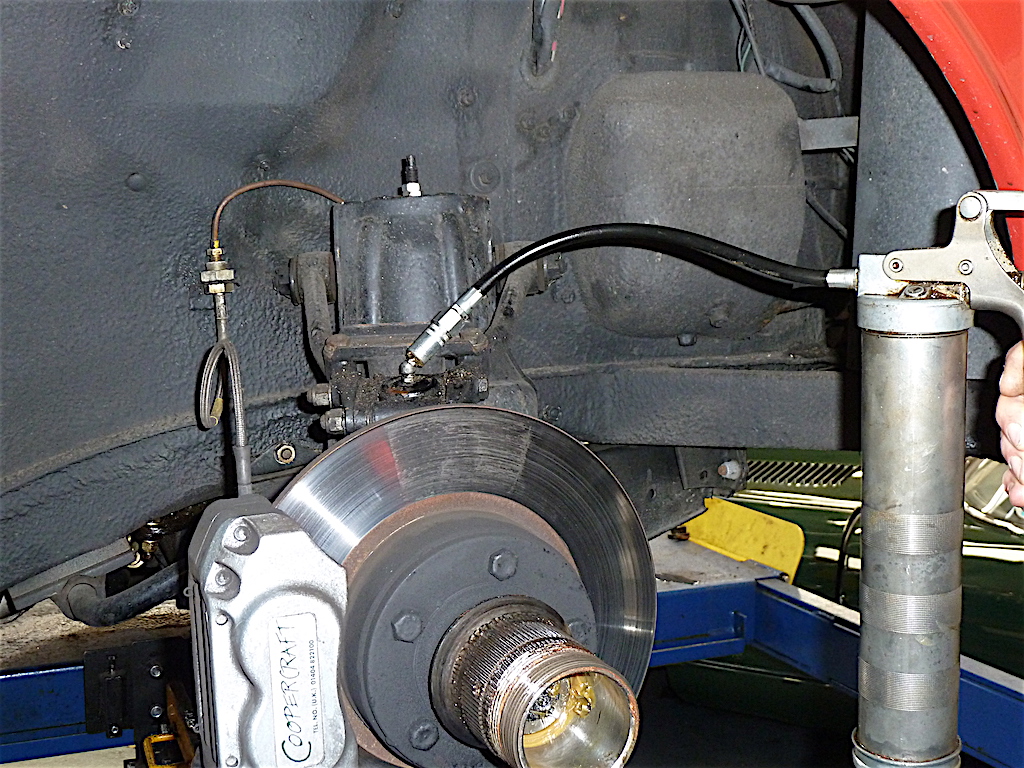He’s having a go again – this time about people who don’t grease their old cars…
Go on then, Grumpy Old Mechanic, what’s wrong now?
You would never believe the number of classic cars that I have seen lately that have obviously not seen a grease gun for many a long year.
Why is this important? Because in the good old days, manufacturers fitted grease nipples so that periodically fresh grease could be introduced to moving surfaces to minimise wear.
Direct metal to metal contact (for example between a king or swivel pin and the bushes in which the pin rotates) encourages friction which results in rapid wear, UNLESS lubricant in the form or grease (or, in some cases, a ‘heavy’ oil is specified) is introduced to separate the metal components and to help make the car’s controls (in this case the steering) feel lighter.
Lack of lubrication also means that it is easier for moisture and/or grit to enter and create havoc between the two moving surfaces. By contrast, frequent/regular attention with a greasegun helps to drive out contaminants and keep things moving sweetly…
Mileage/time intervals vary. In the 1920s many car handbooks advised owners to re-lubricate their car’s greasepoints every 250 miles or so.
Later recommendations quoted 500 or 1,000 miles as an optimum interval.
For most classics, I suggest replenishing the greasepoints AT LEAST every 1,000 miles or annually, whichever comes first. This will minimise wear caused by excessive friction, AND make the car feel better and easier to drive. Before applying the greasegun, remember to wipe clean each greasepoint and the greasegun’s nozzle, to prevent the introduction of dirt to the moving surfaces.
Yes, re-greasing a car takes time (maybe half an hour every 1,000 miles), but this diligence will be repaid many times over by the avoidance of the need to renew components that will be constantly protected by a film of fresh, clean, slippery grease!
If you are new to classics, and not sure where the greasepoints are on your car, join the relevant club(s) and talk to fellow owners, and/or check in the literature (handbook/workshop manual) relating to your vehicle; often a diagram is included, indicating where the various greasepoints are located.
It is worth adding that often the ‘sealed for life’ (i.e. non-greaseable) components fitted to most cars after about 1965 tend to fail far earlier than the older types, PROVIDED THAT in the latter cases frequent/regular attention with the greasegun is given.
Finally, write down the date and mileage when you carry out such lubrication attentions; in the future it will help you work out when re-lubrication is next due.
